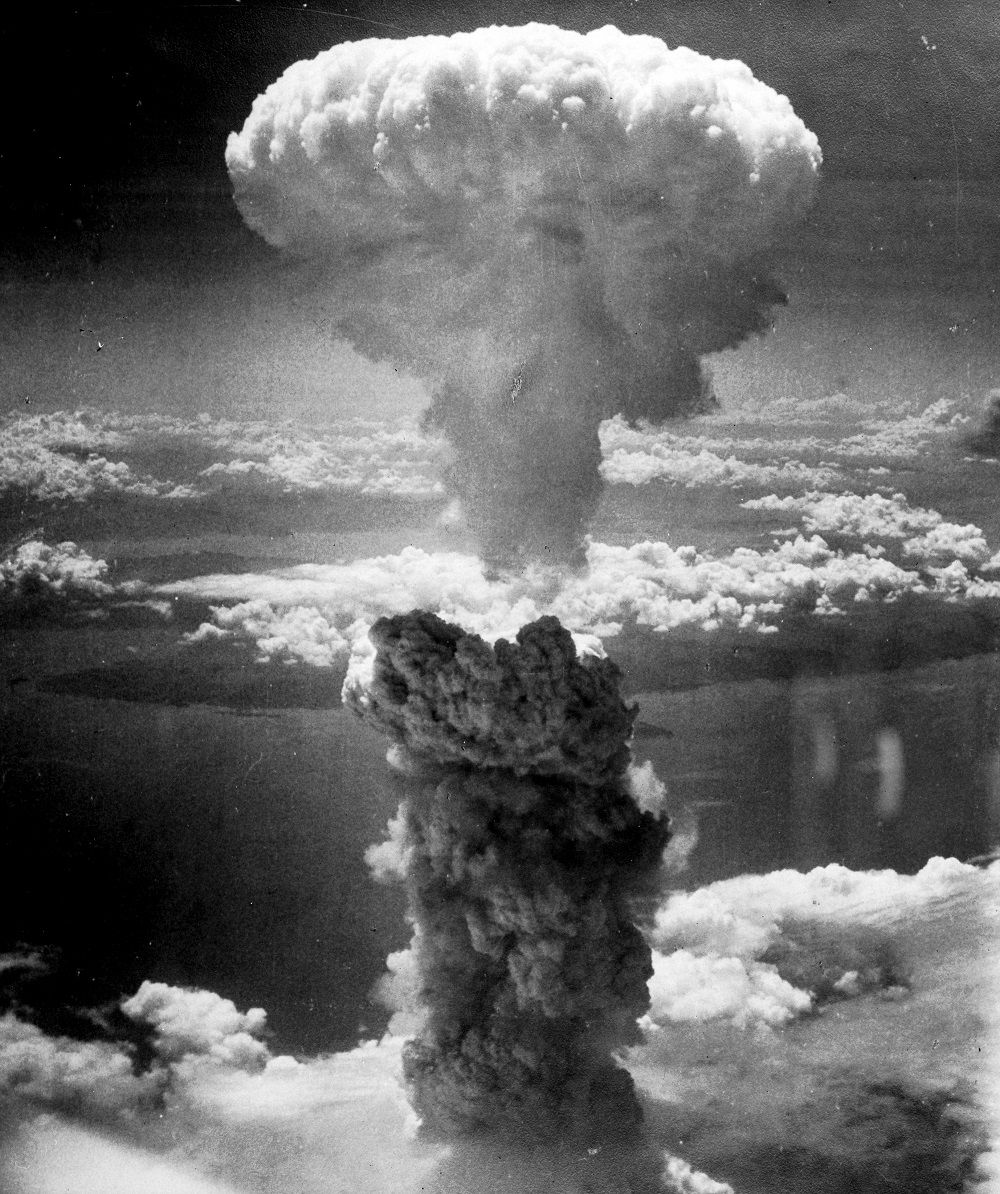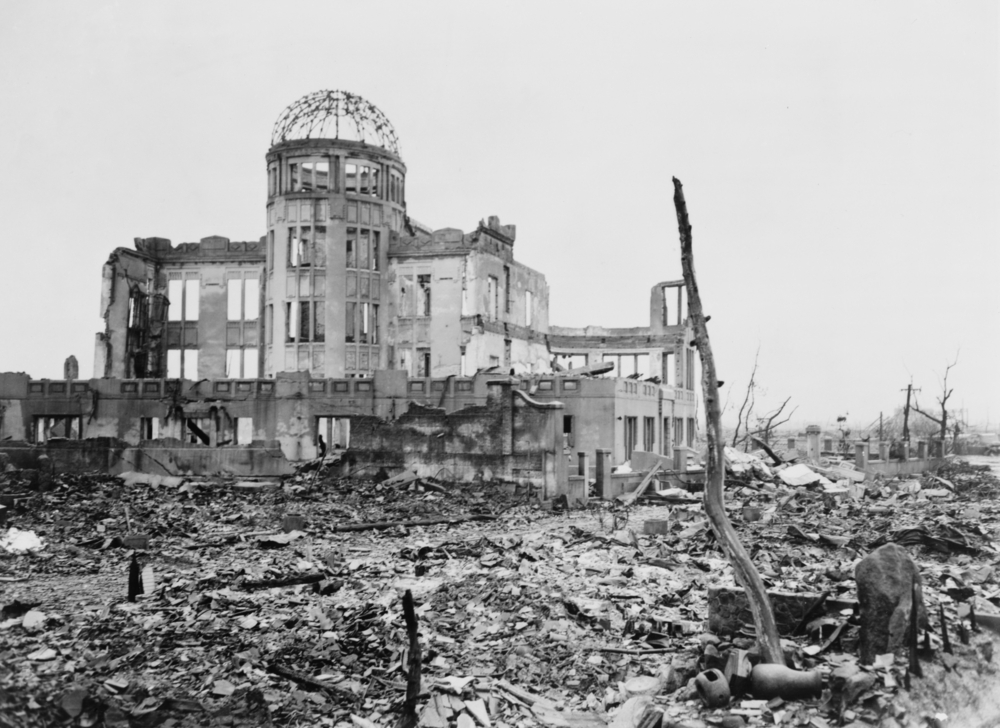A pivotal moment in history that changed everything: the atomic bombings of Hiroshima and Nagasaki.
When I first saw pictures of Hiroshima, I can still clearly recall the deformed buildings, the scorched earth, and the shadows burned into the walls. As a history buff, no textbook could have adequately prepared me for the emotional impact of those pictures.
In addition to being military occurrences, the atomic bombings of Hiroshima and Nagasaki marked moral, political, and human turning points. These two days in August 1945 changed the course of history, ending World War II and ushering in a new age of nuclear fear.
I’ll explain the causes of these terrible attacks, the actual bombings, and the immediate and long-term effects that Japan and the rest of the world had to deal with in the following paragraphs.

Who and why did someone say, “ok, let’s bomb them!”
The world had been at war for almost six years by the middle of 1945. Japan fought on despite heavy casualties and the Allied forces’ growing hold across the Pacific, even after Nazi Germany had surrendered in May.
The cost of an invasion of the Japanese mainland, for both sides, was demonstrated by the battles of Iwo Jima and Okinawa. Harry S. Truman, the newly appointed president following the death of Franklin D. Roosevelt, faced a difficult decision.
The first atomic bomb in history had been successfully produced at the same time by the Manhattan Project, a top-secret program. In locations like Los Alamos, New Mexico, scientists had been working tirelessly for years to harness the destructive power of nuclear energy; many of them had escaped Nazi persecution. The successful Trinity test, which took place in the New Mexico desert on July 16, 1945, marked the start of a new and terrifying era and was a flash of light brighter than the sun.
Truman approved the use of the atomic bomb because Japan was not displaying any signs of capitulating and was in danger of invasion, which could have claimed hundreds of thousands of American lives. Shocking Japan into immediately surrendering and bringing the war to a swift conclusion was the straightforward but terrifying objective.
The bombing started with Hiroshima in August 1945
On August 6, 1945, at 8:15 a.m., the American B-29 bomber Enola Gay dropped an atomic bomb known as “Little Boy” over the strategically important military and industrial city of Hiroshima. A blinding flash swept through the city in a matter of seconds.
At the explosion site, temperatures reached over 7,000°F (3,900°C), vaporizing people and buildings in an instant. I have goosebumps while writing this… Around 70,000 people were killed in the blink of an eye. And this would have been just the beginning of a whole tragedy.
Over 70,000 more would perish in the ensuing months as a result of injuries, radiation sickness, and burns. Roughly 70% of all the buildings in Hiroshima were either destroyed or extremely damaged.
All the survivors experienced social stigma and chronic trauma in addition to physical harm. Years later, many developed cancer, leukemia, and other radiation-related diseases. And the effects are still seen in today’s world, decades after the event.
Nagasaki: August 9, 1945
Despite the horror of Hiroshima, Japan did not immediately surrender. Three days later, on August 9, 1945, a second atomic bomb—this time called “Fat Man”—was dropped on Nagasaki, a port city with major military factories.
Originally, the city of Kokura was the intended target, but cloud cover forced the crew to divert. Nagasaki’s geography—a valley surrounded by hills—contained the blast more than Hiroshima, but the bomb was even more powerful.
Around 40,000 people died instantly. Tens of thousands more succumbed to injuries and radiation exposure in the weeks and years that followed. Much of Nagasaki was leveled, though its topography limited total destruction compared to Hiroshima.
Japan’s Surrender and the End of WWII
On August 15, 1945, just six days after the Nagasaki bombing and the Soviet Union’s declaration of war on Japan, Emperor Hirohito announced Japan’s surrender. It was the first time the Japanese people had heard the Emperor’s voice.
World War II—the deadliest conflict in human history—was over. For many in the U.S. and its allies, the bombings were seen as tragic but necessary. They had ended a brutal war without the need for a full-scale invasion. However, even at the time, some American military and political leaders questioned whether Japan might have surrendered without the use of atomic weapons.
The Human Cost and the Long Shadow
The atomic bombings caused unimaginable suffering. Entire families were wiped out in seconds. Survivors lived with deep physical and emotional scars. Even those born years later faced higher rates of cancer and other illnesses due to radiation exposure.
Photos and survivor testimonies eventually brought the realities of nuclear war to the world’s attention. Schools destroyed, children with burns, and black rain falling from the sky—it all seemed apocalyptic. And in many ways, it was.
The United States quickly found itself at the center of a global nuclear debate. Had it opened Pandora’s box? Could humanity control this terrible power, or had the atomic age doomed us all?
A Legacy of Controversy and Reflection
To this day, historians, ethicists, and survivors debate whether the atomic bombings were justified. Supporters argue that the bombs saved lives by preventing a prolonged war. They also point to Japan’s refusal to surrender after Hiroshima and its military culture of fighting to the death.
Critics counter that Japan was already on the brink of collapse, and that a demonstration of the bomb’s power or waiting for Soviet involvement might have ended the war without targeting civilians.
The debate has no easy answers. But one thing is clear: Hiroshima and Nagasaki changed the world, not just geopolitically, but morally. They forced us to confront what we’re capable of, both in destruction and survival.
Conclusion:
As someone who has spent countless hours reading, researching, and reflecting on these events, I’m left with a deep sense of awe and sorrow. The story of Hiroshima and Nagasaki isn’t just about two cities. It’s about humanity’s potential to destroy, and the courage of those who survived and rebuilt.
The atomic age began with blinding light and ended with World War II. But it also left a mark on our collective conscience that cannot—and should not—be forgotten. What we do with the memory of these tragedies matters. Hiroshima and Nagasaki serve as haunting reminders of the cost of war and the responsibilities that come with technological power.
They urge us to think twice before choosing force over diplomacy, and to remember the human faces behind every statistic. As new generations grow up in a world still threatened by nuclear weapons, the lessons of August 1945 remain painfully relevant. We owe it to the past—and the future—to never let such devastation happen again.
Curious to read more stuff about this topic? I got you a couple of suggestions:
Hiroshima by John Hersey – a powerful account of six survivors.
The Making of the Atomic Bomb by Richard Rhodes – a Pulitzer Prize-winning look at the science and politics.
Nagasaki: Life After Nuclear War by Susan Southard – in-depth reporting on survivors’ stories.
You may also want to read: Franklin Delano Roosevelt: 11 Heroic Facts About America’s National Savior.
